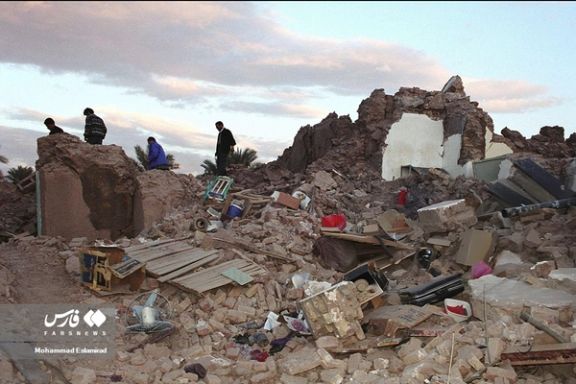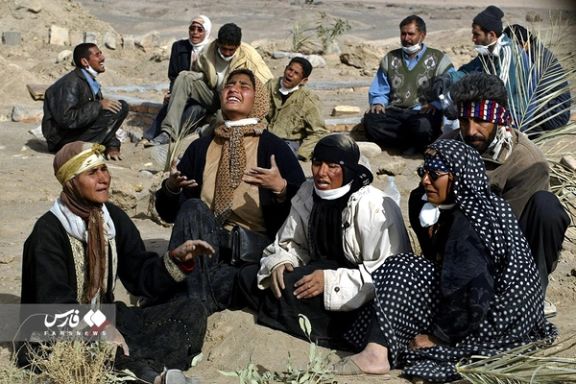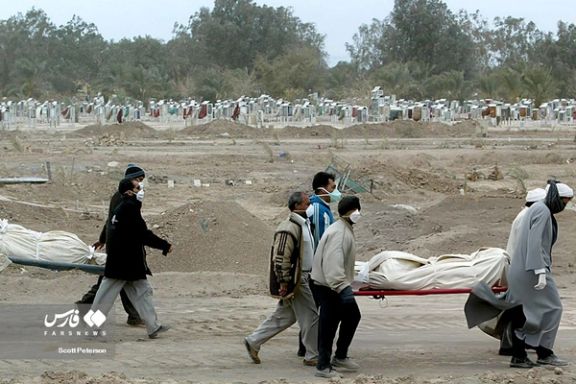Fears Of Another Mismanaged Earthquake Tragedy Loom In Iran

Twenty years since a 6.6-magnitude earthquake shook Bam city in southeast Iran, killing 34,000, fears of a repeat loom large amid Iran's dire corruption.

Twenty years since a 6.6-magnitude earthquake shook Bam city in southeast Iran, killing 34,000, fears of a repeat loom large amid Iran's dire corruption.
Earthquake mortality has been found to be higher in countries where corruption is high and in the past 30 years, 83% of all earthquake-related deaths have occurred in anomalously corrupt countries, according to a 2011 report.
In the aftermath of a natural disaster, deterioration of public institutions and a proliferation of inferior building stock can lead to more severe consequences.
As Iran is prone to natural disasters, the UN emphasizes the importance of adopting an effective long-term strategy but the details of mismanagement indicate that tragedies such as the tragedy of the Bam earthquake may repeat themselves.
Authorities reported the Bam earthquake death toll a massive 17 years after the tragedy. Until then, the numbers were estimates and not based on official data. The authorities in Bam resorted to “traditional” healing methods in the first nights following the earthquake, which the Rouydad24 website identified as “opium” being given to survivors.

Further examples of poor management can be found in the book by Bijan Daftari, the head of the Iranian Red Cross Society (IRCS) Rescue and Relief Organization at the time of the earthquake. The authorities failed to locate the epicenter of the earthquake for hours, he said.
Many could not imagine earthquakes occurring in that region since it was the home of Bam City, a UNESCO World Heritage Site dating back to the Achaemenid era (6th to 4th centuries BC) that had stood strong for centuries. Furthermore, all communication with the city of Bam was disrupted, and the airport was temporarily inaccessible.
Municipalities, fire departments, hospitals, medical centers, and police stations in Bam city were destroyed, as well as key municipal officials, such as the mayor. In other words, virtually all of the city's infrastructure and vital arteries were destroyed.
The arrival of rescue forces took hours, and the only effective force for rescue was the remaining healthy victims, who, according to another IRCS official Jamal al-Dini, had not received sufficient training. Daftari also pointed out that the government made a mistake by involving the IRGC in the disaster management process.

“Given that the IRGC did not have a pre-defined plan for such cases, and no exercise had been conducted with other organizations, this decision made the response process difficult for some time,” Daftrai wrote in his memoir.
Iran experiences an average of 10,000 earthquakes per year, according to the UN which defines the only acceptable response to such disasters as long-term reconstruction, recovery, and risk reduction. It has been demonstrated that earthquake-resistant construction can prevent tragedies from occurring such as is found in Japan and Chile.
After a 7.3-magnitude earthquake in Ezgeleh southwest Iran in 2017, the Iranian authorities were once again inadequately prepared to deal with the ensuing crisis.
In a report titled "Crisis in Crisis Management'' in 2017, Shahrvand newspaper quoted Hamidreza Eskash, a crisis management lecturer and consultant, as saying: "Crisis management in Ezgeleh was no different from what happened in Bam. The number of facilities and resources had increased a bit, and we saw more helicopters in the sky.”
This statement is supported to a large extent by the report of the Housing, Road and Urban Development Research Center on the Ezgeleh earthquake. The report states that the destroyed structures were not suitable for seismic zones, the same thing which happened in Bam and its surrounding villages.
Mismanagement still prevails in logistics preparation and response to the crisis, which is the result of managers' ideological viewpoints. A memorandum of understanding signed with the Qom seminary to reduce natural disasters reflects the view of the leaders of the Islamic Republic.
With experts warning of a possible tremor in Tehran with a population of 11 million and located in a seismic region, any large earthquake will result in a disaster of epic proportions, unless the government begins to seriously prepare itself.